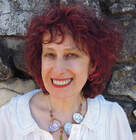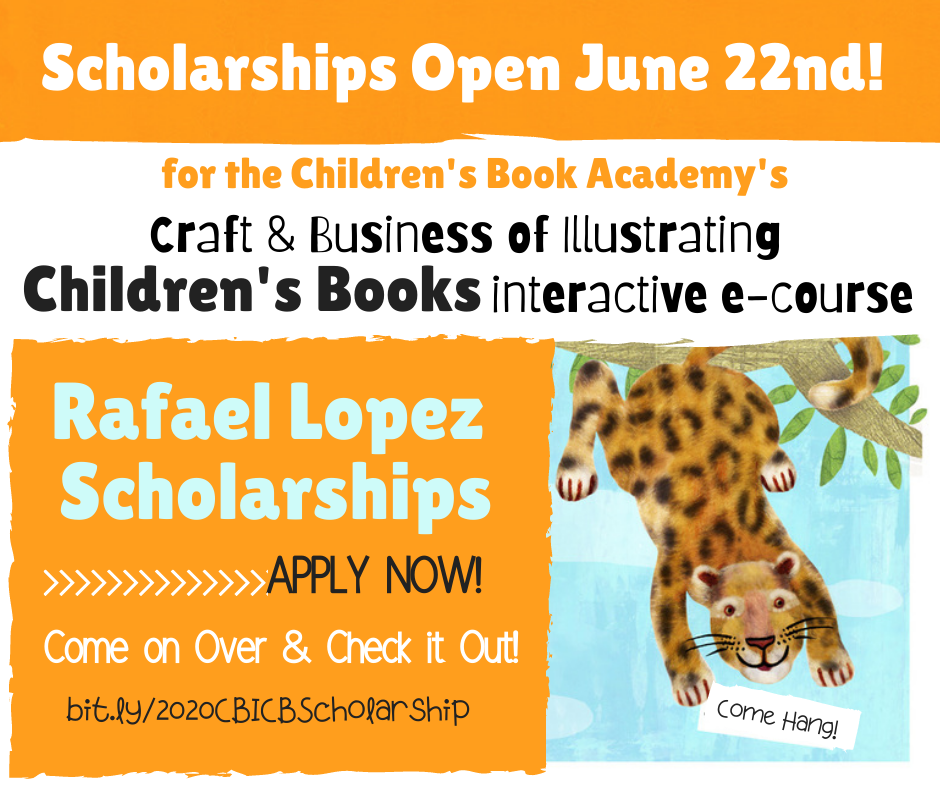|
by Mira Reisberg MIra is super busy preparing for next month's Craft & Business of Illustrating Children's Books, so we're reposting a previous blog that many found helpful. Children's Book Academy is offering generous full and half scholarships for this course AND for a limited time, you can use the promo code ARTLOVE for an incredible $100 discount. by Mira Reisberg I'm getting ready to teach another fabulous picture book illustrating course and have been reflecting on why some books sell and others don't. So I came up with five reasons why your picture book might not be selling. Let's start with the four essentials that every picture book needs to have. ,One. Is your story and language age-appropriate? Your story needs to be age appropriate with age appropriate interests and language. In other words you need to know about children's developmental stages. For example, if you are writing a book for 3-5 year-olds, you might want to re-think having a super scary Halloween story with an unresolved ending as kids that age can have trouble differentiating between fantasy and reality and can also be fearful of the unknown. At the same time, you could absolutely have a Halloween story for that age but you'd want to make it playful with a reassuring ending so that the child won't be scared to go to sleep at night. Generally with a much younger audience, stories need to be sweeter, or more quirky or goofy, or reassuring than scary. In terms of language, 3 to 5-year-olds are beginning to learn about their world and starting to try and decipher or memorize words to keep up with the read aloud. So the language needs to be more manageable, more playful, and more accessible. If you do introduce higher level language, you need to contextualize it, or explain what it means in some way either through the images, or in context with what else is going on in the story. The Fancy Nancy books, which are marketed for 4-8 year-olds use elevated language, which is explained in asides by Nancy such as, “My favorite color is fuchsia. That's a fancy way of saying purple.” The word is explained in a fun way while adding to the kid's vocabulary . While Tara Lazar's list of "500+ Things That Kids Like" isn't set up in terms of developmental stages, it is a fun read to get inspired. https://taralazar.com/2007/11/04/199-things-that-kids-like/ Two Do you write in a way that makes the reader want to keep reading? This begins at the beginning with your hook - in the form of a problem that needs to be solved, a journey that needs to be taken, a great desire that needs to be attained and so on... to provoke the big question or curiosity of... What happens next? Pacing your story through suspenseful tries and fails and gripping page turns, or laugh out loud language will help you keep your reader hooked. Language comes into play in a big way. If it's a soulful book or more serious nonfiction, use exquisite lyrical language with assonance, consonance, alliteration and beautiful rhythms. If if it's a playful or funny book use onomatopoeia, wordplay, the different types of lyrical language described above and different types of humor (hyperbole, contradiction, malaprops, spoonersims etc.). Three. Do you make the reader care enough about your characters to stay with them? No matter what your characters are like, we need to care enough about them to want to stick with them throughout the story and we also need for them to be memorable. Even if they're not that sympathetic you can make them more sympathetic by making them charming, or by revealing where they got their flaws from, or having them do or show something kind-hearted or generous early on in the story. For example, "Grumpy George didn't have any friends, except his Mama and his little brother Gordy, who he loved more than anything else in the world." Well if he loves his Mama and his little baby brother, he can't be all bad and there's room for redemption. One of my all-time favorite sympathetic villains is John Szieska's A. Wolf in The True Story of The 3 Little Pigs by A. Wolf. He's such an incredibly charming unreliable narrator (liar) that we can't help but keep turning the page. Think about giving your characters quirky names or names that go against their essential nature as Jenny Offil does with Sparky! (the sloth). Your characters are the emotional core of your story and their problems and feelings become our problems and feelings as we stay with them on their journey to solve the problem or attain their goal. Four. Do you leave your reader satisfied at the end? You need to give your picture book a wonderful ending that ties up all the loose ends, and leaves the reader with a good feeling whether that's a satisfied feeling of well-done, a touching tender feeling of "awwww", or a big smile or laughter with a twist at the end. Reading children's picture books needs to be a satisfying experience no matter what the subject matter, so that kids will want to become readers or become stronger committed readers. It's a big responsibility, one that editors and agents take seriously, no matter how playful the book. So ask yourself:
If you can answer yes to all of these, you are 3/4 of the way there. Now I'm going to insert 4.5 here with some other practical things before launching into the slightly more random #5 Four.5 Did you present professionally? Editors and agents are crazy busy. You cannot imagine how stretched they are, which is why you need to research them first and address them as people with names when submitting and why you are specifically submitting to them. Your manuscript needs to be professionally formatted with few typos or errors and the same with your cover letter, which should be as charmingly written as your story. You want to come across as professionally and personable as possible so that they will want to work with you and reassure them by the professionalism of your submission package that you know what you are doing and that you won't be a pain to work with. Why? Re-read Four.5's first sentence. And now for reason five of why your book might not be selling Five Did you submit to the wrong place or wrong person at the wrong time, or Are you resisting to persisting in submitting? The beginning of this one is a bit of a wild card. You might have submitted your work to an editor at a house that has just acquired a book very similar to yours, or there might be another similar book already on their list (this is where research comes in handy because they don't want to compete with themselves) or you might submit your dog story manuscript or query to an editor who dislikes or doesn't connect with dogs. Fortunately with MSWL sites (manuscript wish lists from editors and agents), you can find out what specific editors and agents like or are looking for in advance. The thing to be aware of with this is time sensitivity. By the time you contact them with your alien chocolate loving cat story, you editor or agent might have acquired another chocolate loving cat story from someone else, which is why it's important to not write according to what someone else loves, but to write what is meaningful or important for you. Still, if you go to MSWL and find someone who loves or likes things similar to what you are writing - go for it! Here are some links for a few MSWL websites that might prove super helpful for you (you might even want to start putting your own custom database together:
And finally - are you resisting in persisting in submitting your manuscript after receiving some rejections? Children's book creatives are in a weird position in that we need to be sensitive to create kid's books and at the same time we have to have a thick skin to learn from critiques and rejections and not personalize them so that we can keep improving our work and re-submitting. Oy! But the thing is that the people who do all 5 (or 6) of these things well are the ones most likely to succeed. Having a wonderful support network, continuing your education into both the craft and business of creating kid's books, and being persistent really are the keys to success.  Brief Bio: Dr. Mira Reisberg is the founding director of the Children's Book Academy, an Editor and Art Director and an A type overachieving creative with a ridiculously long resume! Mira is passionately committed to helping people make wonderful children's books to get them published and into children's hands.
Abamenko Petro
7/26/2023 03:47:13 pm
Discovering a reliable online gaming platform can be a bit of a challenge, but <a href="https://slotscity.com/game-hall">https://slotscity.com/game-hall</a> makes it easy. This site is home to an expansive game hall where every game is an exciting adventure waiting to happen. The platform's user-friendly design ensures smooth navigation, while robust security measures instill confidence. With excellent customer service that’s always ready to assist, this site ensures a top-notch gaming experience. Comments are closed.
|
We are so excited to be mixing things up at CBA, beginning with some delicious additions to the Blogfish. Meet our awesome bloggers!!
Here's our lineup: 1st Mondays begin with former school psychologist Dr. Debra Collins who will be writing about Social emotional Learning in kidlit and behind the scenes as well as Jewish children's books. 2nd Mondays will feature super smart Melissa Stoller whose career is taking off with several new books. 3rd Mondays will feature our new blogger coming soon. 4th Mondays features new blogger, the fabulous Brentom Jackson, who has a beautiful approach to blogging. And 5th Mondays we'll be taking a break Archives
July 2024
|
|
Discover
|
About Us
|
Join Us
Join our Community and receive a fabulous free gift, KidLit tips, newsletters, scholarship info, contests, and more!
Join our KidLit Mentorship |
Social Media
Interact with our FaceBook Group or follow us on:
|
© 2010-2024 All content on this website is copyrighted. Sorry, all courses are non-refundable.

 RSS Feed
RSS Feed
